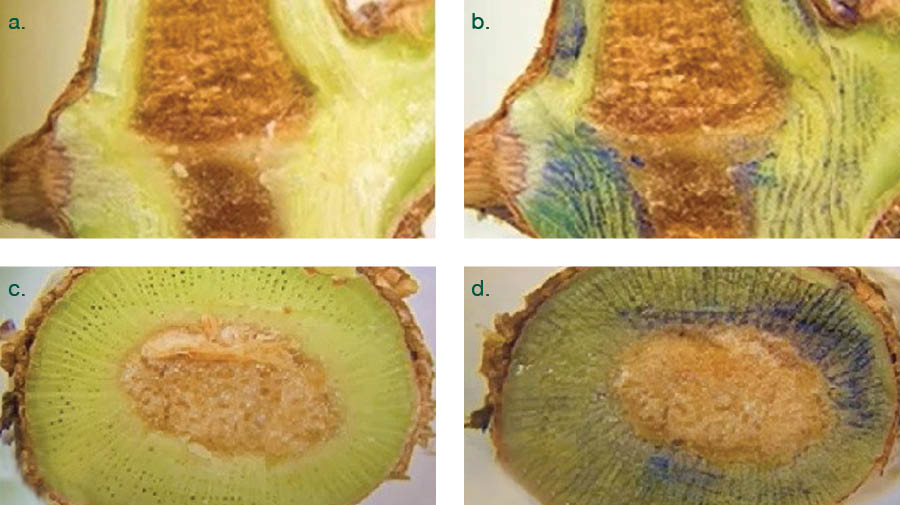
Latest
News
Post-harvest – a key period for Orchards and Vineyards
Post-harvest is an important period for perennial tree crops and vines. This is when carbohydrates and nutrient reserves (like nitrogen) are replenished prior to dormancy. These reserves are then used at bud or flower burst and the start of the next season.
Post-harvest applications of nutrients and biostimulants ensure adequate levels of nutrients are available and accessed by your trees or vines. Application immediately after harvest also avoids the rush or non-application of required nutrients later in the season due to overly wet conditions.
Carbohydrate reserves play a crucial role
In woody plants, carbohydrates are found at their highest levels in the roots. As a result, energy reserves in roots
change dramatically throughout the year, decreasing rapidly with bud-burst and early leaf growth and sensitive to late-season stresses, management practices and soil fertility.
Poor accumulation of energy reserves post harvest can greatly affect a crop’s performance next season. Energy and nutrient reserves are vital in tree crops such as almonds and stone fruit which start the season with reproductive growth and fruit development before substantial canopy development can supply the energy trees require. [i]
Perennial crops such as apples or vines start a new season with vegetative growth. They depend on reserves only during their earliest stages of development, or until the first five or six leaves have formed. Thereafter, photosynthesis from the leaves becomes the primary source of carbohydrates for flower and fruit growth.
Building energy reserves
Post-harvest leaves remain active to build carbohydrate and nutrient reserves. Sugars synthesised in leaves are converted to starch in the perennial tissues (Fig. 1) and used the following spring to support shoot or flower growth and fruit cluster development.

It is important to provide 4-6 weeks after harvest and before leaf fall so perennial crops can renew their carbohydrate and nutrient reserves.
Importance of nutrients
Nutrient requirements vary depending on the type of crop, age of the plantings and yield target. Typically though, post-harvest applications of N, P and K can be 20 to 40% of the entire season’s nutrient budget.
While N, P and K are well understood, the importance of microelements is often underestimated, with corrective action taken through foliar applications during the season after an issue has been detected. For example, a mild boron deficiency does not show recognisable foliar symptoms, but trees will not reach their potential on fruit set, often resulting in fruit drops. This is particularly important for crops where boron is not mobile in the plant, e.g., walnuts.
Applying nutrients as part of a post-harvest application ensures crops are prepared for the next season.
Including Phosphorus
Correcting nutrient deficiencies is best performed by supplying nutrients through the soil.
BioAgPhos-based blends supply additional calcium, potassium, sulphur or magnesium and can also be produced with trace elements: Boron, Iron, Manganese, Zinc, Copper, Cobalt, Molybdenum etc., to meet the needs of the crop. They are also compatible with other solid soil conditioners such as lime, gypsum or compost and can be blended on-farm and applied in a single pass.
BioAgPhos is manufactured from high-grade reactive phosphate rock. It contains up to 12.7% P and 35% Ca and is treated with phosphate solubilising bacteria and other soil beneficial micro-organisms. As a result, it does not leach or lock up in soils, is over 98% plant available, and is an ideal source of long-lasting P in all permanent plantings.
Supporting your crop by supporting soil biology
Post-harvest crops can face abiotic stresses, hot or cold conditions, dry or wet. Supporting soil microbiology supports roots and the uptake of nutrients.
BioAg Soil & Seed is applied to soils and is an excellent soil microbiome builder, feeding and expanding the volume and diversity of beneficial soil micro-organisms. This, in turn, improves nutrient solubilisation, cycling and uptake and soil properties, mitigating heavy clay and issues associated with high Magnesium levels.
The addition of macro- or micronutrients in a tank mix with Soil & Seed increases their plant availability by creating amino and organo-acids bonds (chelation). This is particularly true for micronutrients that are readily oxidised or precipitated in soils, such as iron, manganese, zinc and copper.

Recent Comments